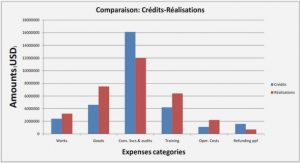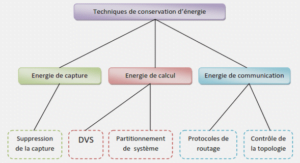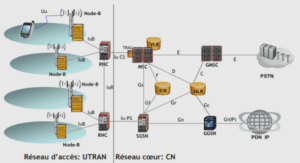Decision making under risk
Decision theory has a long history since the emergence of probabilities. The first natural criterion of decision making under risk is the standard expectation value. This naive criterion has been challenged by the St. Petersburg paradox in the 18th century and solved by Bernoulli (1738-1954) that postulates the expected utility criterion. This criterion has been axiomatised by von Neumann and Morgenstern (1944) (modern presentations refer usually to Marschak (1950), Herstein and Milnor (1953), Luce and Raiffa (1957), Jensen (1967) or Fishburn (1970) for exogenous probabilities). This formulation is tractable, it defines the attitude toward risk and it is applicable to many academic fields, especially those related to the theory of non cooperative games. Expected utility is based on the independence axiom and has a normative appeal. However, many experimental results have shown that this decision criterion was questionable. The most popular is definitely the Allais paradox (1953) which leads to the definition of two more general phenomena, common ration effect and common consequence effect. Both phenomena have been reproduced by Kahneman and Tversky (1979) (problems 1,2 and 3,4 respectively). MacCrimmon and Larsson (1979) provide a detailed study of the paradoxes of the independence axiom in the context of risk and radical uncertainty. The descriptive accuracy of expected utility has led to generalizations that we can classify into three non exhaustive and non-mutually exclusive categories.
The first class of generalizations weakens the independence axiom. The contribution of the first chapter is in this class. The sophistication of the expected utility theories with a clear axiomatic framework, identifying the weakening of the independence axiom, allows to better understand the normative and descriptive aspects of these theories. For example, weighted expected utility proposed by Chew and MacCrimmon (1979) where the independence axiom holds for lotteries in the same equivalence class and rank dependent expected utility axiomatised by Quiggin (1982) in the risk where the independence axiom holds for co-monotonic lotteries.
The second class of generalizations rejects the independence axiom. One example is the local expected utility initiated by Machina (1982) and developed by Chew and Nishimura (1992), Chew and Hui (1995) and for a recent contribution Chaterjee and Krishna (2011). This approach preserves the weak order condition and requires a notion of differentiability of the representation of the preferences. The expected utility becomes a local notion (in the topological sense) because differentiable functional can be considered as locally linear. This approach allows great flexibility and a generalization of criteria attitudes towards risk . Another example is the theory of Luce (see Luce (2000) for a compilation of all of his work and Wakker (2000) for a short summary). Luce built an alternative theory from psychological concepts and found the majority of standard models from behavioural axioms with a concatenation operation between lotteries.
The third class consists of generalizations based on experimental approaches focusing on the descriptive aspect of the individual decision-making, identifying utility functionals that reproduce the experimental results. The best known example is the prospect theory of Kahneman and Tversky (1979) and refinement, the cumulative prospect theory (i.e., the rank-dependent prospect theory (1992)). Another example is the TAX model (Transfer of Attention Exchange) developed by Brinbaum and Chavez (1997).
Rank-dependent expected utility is certainly the contribution that has had the most success in decision theory (e.g., see Weber and Kirsner (1997), Diecidue and Wakker (2001) and Mongin (2009) for arguments highlighting the rank dependent expected utility). This theory has, both in the context of risk or uncertainty , and in many models to accommodate violations of expected utility theory. In addition, the functional associated with this theory preserves interesting properties such as stochastic dominance. Empirically, the rank-dependent expected utility leads to better results than expected utility or weighted expected utility for choice situations referring to the Allais paradox. In more general situations, rank-dependent expexted utility does not perform better than expected utility or other theories .
Social interactions and other-regarding preferences
Social Interactions refer to socio-economic phenomena where individuals’ choices are not solely mediated by the price mechanism and are influenced in particular by the choices of other individuals in their social reference groups. Rather than existing as isolated entities, individuals are embedded within networks of relationships, e.g. peer groups, families, colleagues, neighbours, or more generally any socio-economic group. In game theory, empirical evidences challenge the paradigm of self-interested agents. In economics, the idea that the well-being of an agent depends on the relative as well as the absolute well-being is usually attributed Veblen (1899). More “recently”, Duesenberry (1949) or Leibenstein Leibenstein (1950) had already considered that, in some situations, the relative well-being may be more meaningful than the absolute well-being. In decision theory it is then necessary to introduce interdependent or other-regarding preferences. The introduction of agents’ concerns for relative outcomes into economic models are of particular interest and has been shown to carry serious implications in different fields such as demand analysis, labour economics, growth, Asset pricing, Attitude toward risk or uncertainty .
Pioneering work of Schelling (1971) had persuasively shown that several important aggregate phenomena crucially hinge not only upon the self-interested motives of individuals, but more deeply upon the interactions among them. This was next pointed out in a paper by F¨ollmer (1974) for non-market interactions, random preferences and random endowments in a general equilibrium model. These effects are due to social multiplier in behaviours.
|
Table des matières
Introduction
Motivations
Decision making under risk
Social interactions and other-regarding preferences
Quantum probabilities
1 Additive Utility Under Risk
1.1 Introduction
1.2 Orthogonally additive functional
1.2.1 Orthogonal additivity
1.2.2 Discussion
1.3 The case of the simplex
1.3.1 Setup
1.3.2 Orthogonal additivity in the simplex
1.3.3 n = 2 and n = 3
1.3.4 The axioms
1.3.5 The theorem
1.3.6 Stochastic dominance
1.4 Applications
1.4.1 An application to variational preferences
1.4.2 Data in the literature
1.5 Proofs
1.6 Conclusion
2 “Discrete” Choice with Social Interactions
2.1 Introduction
2.1.1 Motivations
2.1.2 Related results
2.2 Exogenous Reference Group
2.2.1 Non separable preferences across individuals
2.2.2 Separable preferences across individuals
2.3 Endogenous Reference Group
2.4 Adding an entropic term
2.5 Proofs
2.6 Conclusion
3 EUT with Non-Commutative Probability Theory
3.1 Introduction
3.2 Towards non-commutative probability
3.2.1 Motivations
3.2.2 Literature review
3.2.3 Replace the set of events ?
3.2.4 The assumption of “own rationality”
3.3 Von Neumann and Morgenstern’s approach in L(H)
3.3.1 Gamble set
3.3.2 Interpretation of a gamble
3.3.3 Representation of preference relations
3.4 Utility matrix
3.4.1 Interpretation of an utility matrix
3.4.2 Utility under certainty and risk
3.5 Applications
3.5.1 Prospect theory
3.5.2 The Allais paradox
3.5.3 Marschak-Machina triangle
3.6 Discussion
3.7 Proofs
3.8 Conclusion
3.9 Appendix
3.9.1 A – Quantum Logic
3.9.2 B – D-algebras
3.9.3 C – Quantum mechanics
Conclusion
![]() Télécharger le rapport complet
Télécharger le rapport complet






